- Home
- Aer-ki Jyr
Star Force: Revulsion (SF70) Page 3
Star Force: Revulsion (SF70) Read online
Page 3
“Admiral, deploy drones and have the Archer 13 come with us and do likewise. Primary target is that nearby fleet while the rest of ours covers the entry point. Bring us with the drones, we’re going to need the heavier weapons.”
“Navigator, plot and execute course correction,” Krimja said as the Archon let him handle the details while he studied the updating battlemap. “Drones stand by to detach after we gain momentum. Comm, signal the Archer 13 to do the same and link them in with our navigational control. I want a simultaneous jump and us riding even with them. No lagging. The more time we take the greater the chance of those ships running.”
As the Bsidd sat down at his command station the bridge crew got to work carrying out his orders. Two decks below them there was a huge chamber filled with individual stations that half of the drone controllers now sat in. The other chamber was located a deck below and both were safely inside the central mass of the ship and very difficult for weaponsfire to find. Every station in both chambers was filled with Bsidd of varying types, all of which were soon to be assigned to some task.
Who went where and got what assignment was the purview of the bridge crew who, as soon as the issue to deploy came, assigned a pilot to each drone while another began feeding them navigational coordinates so they could get underway. The ‘coin racks’ in the back half of the ship began releasing the disc-shaped drones one at a time from each stack with them dropping below the ship and easing away into widely spaced escort slots as the Archer 7 made a fast transition around the star by enhancing its gravitational pull in order to facilitate the tight curve as they accelerated laterally.
The drones had to do so as well as soon as they left the inertial dampening field, but the bridge crew knew better than to try to fly a curved course during release and risk collisions when they passed through the barrier of the IDF and physics took over, so when the time came to release the jumpship’s engines went dark and the warship coasted in a straight line until all were out, then as a group they’d resume the curved trajectory around the star and up to the position of the lizard fleet.
The Archer 7 had a total of 56 drones onboard, including two of the battlecruisers. Those fell to the back of the formation and got a wide spacing before the course alterations began that resulted in all the ships spreading out as their individual engines and navigation calculations put them back on course. Once they were all pivoting on the star’s gravity well they eased back together, pulling navigational information from the jumpship to coordinate a somewhat precise arrival while other bridge crewers were handing out remote piloting slots.
The pilots in the two bays below the bridge were all waiting at their stations until a prompt would come up requesting that they take a control slot. If the pilot accepted then a function on one of the drones would be routed to their station. Helm control had already been divvied up before they left the confines of the jumpship, but now the weapon batteries, shield control, and auxiliary tasks were being handed out with many gunners getting two or more weapons each. How many tasks went to an individual pilot was a factor of how many drones there were for the total number of pilots available and what each of their ratings were.
There was a complex ranking system involved that was run by computer and allowed the bridge crew to hand out assignment in batches or individually as they chose, not having to know the history of each pilot but by selecting ‘best available’ for certain tasks. How much a pilot could multitask was also figured in based off of training scores and combat experience, with those more skilled being given multiple jobs so the less skilled could focus on one or two things and become more effective at them. The less one had to do in battle the more likely that they wouldn’t get overwhelmed. Each of these pilots knew their task and their task alone, for not one of them was assigned tasks on different drones simultaneously.
Each pilot was mentally on one ship, either through a neural interface or the holographic pocket of displays available to them in their little control nooks. They only knew what was happening to their ship, and often not even the whole thing if their attention was on a particular firing line. It was better if they knew what was happening directly around them, but more often than not the gunners didn’t just fire randomly at nearby ships. The bridge crew was also able to assign targets, whether they be individual ships or specific locations on those ships with battlemap markers.
Those virtual orders could also come from the ship’s Captain, the Admiral, or an Archon in a nexus. The gunners often didn’t know who the order was from, they just saw a glowing marker beacon on their displays to tell them that this was a priority target, then they’d decide what to shoot and when, for most of the time they’d have a slew of targeting markers to choose from that were color coded. Pulsing red was the highest priority, with red being very important and orange and yellow below that.
If something was worth shooting, like a comm array or shield generator, it would be marked purple so the gunners knew where to look without having to search themselves. If a marker went yellow that meant it was preferred that they shoot that one over the others. Orange was greatly preferred while red was ‘shoot it now.’ Pulsing red meant to ignore everything else and blow the hell out of whatever was marked as fast as possible.
But there were also other markers, with blue meaning ignore and green meaning don’t shoot at all. Allied ships shown with a green halo, while if a certain section of an enemy ship had something valuable onboard it’d be tagged with green, like the cargo you were trying to steal. If a ship was fighting as a diversion the bridge crew would mark it blue so the gunners knew it was still an enemy, but a waste of shots even if it was flying right in front of your guns.
The color system was different for each race and the control stations were modular so that if, say, a Human needed to replace a Bsidd all they had to do was hit a few buttons and everything from the holograms to button layout to seat shape would alter to match the individual logging into the system. Right now there were only Bsidd, but different variants had different sized bodies, so while their holograms remained the same their seats and button layout did not, for the small Eppies couldn’t reach the farthest buttons on an Alpha’s control board, and an Alpha couldn’t tag the small buttons as easily as an Eppie could.
Star Force had taken all possibilities into consideration, even changing some of the holographic color schemes into wavelengths of light that Humans couldn’t see because they stood out better for other races, and vice versa. The Bsidd had produced this warship, but since it was Star Force any race could use it, and use it on a moment’s notice. All the remote pilot had to do was log in and his or her presets would automatically update, including customized button layout, or they could choose from several default standards.
As these Bsidd controllers got their assignments their screens lit up with localized sensor feeds from the ship they were virtually on as well as having a panel where written orders could be displayed. In addition to that each controller had sound cues to give them additional data and even that very rare vocal communication from someone on the bridge. Each little nook they had was sound dampened via an energy field that allowed them to hear outside their little bubble of reality, but with reducing those sounds to a loud whisper so as to not drown out the various pings and warnings of the ‘gaming system’ they were using.
Every little detail mattered to the battle, and the remote pilots knew better than to get sloppy. If they couldn’t handle all the tasks requested of them they’d only accept the ones that they could, and if they got overloaded they could remit one or two back to the bridge where they would find another pilot to take on that duty…though in battle when you were losing ships the greatest workload would come at the beginning, for so long as a jumpship wasn’t lost you weren’t going to lose remote pilots and they’d share more and more of the tasks with the pilots from destroyed drones as time progressed, increasing overall efficiency as the workload was spread out.
When the pair of warships finally e
nded their tug on the star and leveled out they began decelerating on approach as the lizard fleet picked them up and a few of the ships began to move. As soon as the jumpships were within range they both launched bloons at the same target, with the glowing capsules carrying IDF-laced goo that hit and spread over portions of the lizard jumpship. More bloons followed, blanketing several ships as the others began to run. Even before the drones could get to them more bloons fired off, tagging and disabling ships for a short period of time so long as the IDF field covered all the internal gravity drives. Even one remaining active was enough to allow a ship to move, with several lizard vessels limping off in just such a condition.
A few large Keema blasts shot out across the gap, nearly invisible coming from the battlecruisers, and punched through the shields of the jumpship they hit. The batteries meant for surface bombardment worked well enough against the huge jumpships, but the handful of cruisers with them were too small and mobile to adequately target until the drones closed range…but by that time most of the lizard jumpships had flashed out, making emergency jumps elsewhere in the system to avoid the slaughter that they knew was coming their way.
The two warships and their drones closed with the six jumpships that were left behind as the bloon launchers continued to bathe them in the disabling goo else it’d expire and they’d be free to move again. Even the cruisers knew what was coming and had ran, knowing that they wouldn’t be able to do any damage to the Star Force ships with such small numbers, leaving the caught jumpships to their fate.
However, these ships were tens of kilometers long and didn’t explode with the push of a button. The orders going out to the drones were to disable, not destroy, so the bloon launchers wouldn’t have to sustain continuous fire to keep them in place. That meant first breaching the shields, with the battlecruisers handled nicely in conjunction to the heavy medium-ranged Keema batteries on the warships, then coring into and destroying the gravity drives no matter how deeply buried inside the ship they were located.
Other targets were the weapons batteries, which a portion of the drones went after so they didn’t whittle down the Star Force shields and cause damage during the long process that killing a jumpship took. As usual, Mike sent out an offer of surrender to the jumpships that they obligingly didn’t take. Though he didn’t like killing other starship crews, he didn’t want to be burdened with prisoners on a mission like this. They needed to hit hard and fast, though poaching cargo ships was still a bit distasteful for such an operation.
Fortunately slowing down Star Force with prisoners wasn’t a tactic the lizards had used yet, so Mike’s pair of warships held in place and slowly tore apart the 6 lizard jumpships until they were fully disabled and no more than helpless space stations floating in orbit. They didn’t bother to stick around to pulverize them, rather meeting up with the rest of their fleet that had arrived and proceeding further into the system where the bulk of the enemy forces were.
Mike studied the updating battlemaps as a few drones were sent to every planet for intel purposes. There were no active naval battles at present, but a huge chunk of the natives’ defenses had been wiped out of orbit around one planet and had a very large lizard fleet sitting in the rubble while the planetary defenders were taking refuge alongside their existing battle stations.
Admiral, have a look, Mike said telepathically through the wall from the nexus and onto the bridge as he sent a location ping to Krimja’s station showing him the location of that particular lizard fleet, though there were thousands of ships elsewhere in the system working on other targets and covering the ground troops they had on the semi-conquered worlds.
The Bsidd activated the comm back to the nexus in lieu of the telepathy he didn’t possess, nor any of his race did. That was another reason why the Humans were so suited to being the core of Star Force. The powers of the Archons were beyond impressive.
“A lot to chew, but I think we can handle it without losing too many drones. If they reinforce it’ll tip the scales and we’ll be in a messy fight.”
“I agree,” Mike said, sending the official order out through the nexus. “If the natives jump in we’ll coordinate as much as possible, but let’s assume we’re going at it alone for now.”
“I’ve got a designated comm officer standing by in case they try to make contact. Hopefully we can establish some rudimentary shorthand if they do.”
“I wouldn’t count on that, but try anyway,” Mike said, knowing that language differences didn’t only exist in spoken words but in computer systems as well. “Lizard would be the best bet if they’ve been fighting them as long as we think they have. Work it from there, but I’m not expecting anything so soon.”
“I hope to surprise you.”
“Please do. In the meantime, let’s work on the Bsidd’s kill count. Lots of ships out there to deny the enemy the use of, and in doing so let’s hope we make some new friends.”
“And if not?”
“We killsteal and run. Enemy of my enemy isn’t always my friend, but we can still help these guys out regardless. Just watch our back in case they don’t take kindly to us being here either.”
“I’ll put a man on monitoring them while you go to work. If they head our way I’ll ping you well before they get within weapons range.”
“Thank you. Let’s get busy,” Mike said, cutting the comm and focusing as he linked fully with the nexus and immersed himself in the fleet. Krimja knew he’d communicate with him through the system unless something warranted spoken words and the Bsidd knew to reciprocate, for the less distracting the battlemaster the better. While his crew of remote pilots were damn good, they always fought more effectively with an Archon guiding the flow of battle and he didn’t expect today to be any different.
Settling himself on his bench he began setting up his control boards so he could also issue selective commands with a touch of a button rather than verbally shouting to his crew. When a Star Force warship went into combat the bridge didn’t get noisy, leaving everyone without exterior distractions so they could focus on their small part of the overall battle.
The Admiral’s role was that similar to the Archon’s, and he’d be backing him up mostly while looking for adjustments to make when necessary. Some Archons preferred to let their Admirals fight the battle and make tweaks, but Mike did not. He wanted to be in the hot seat from the beginning, which meant Krimja would be carrying out his general orders and adding the detail necessary so the Archon wouldn’t have to.
To that end he received his first vector allotment, indicating that Mike wanted three prongs to the attack, and the Admiral went about assigning warships to each with theirs being added to the central group first off.
4
The left prong to the Star Force attack skirted well wide of the lizard formation as it broke from its holding orbit and rearranged itself into swarm mode, clumping the cruisers together so they could mass fire on the drones. If they didn’t they’d get picked apart too easily, plus it would make it harder for ramming countermeasures to come into play. When necessary the lizards were still attempting to go kamikaze against ships though they didn’t try so many times against the jumpships knowing they had dampening shields that could slow their momentum or stop it entirely before reaching the proper shields.
The drones were a bit different, being much smaller and not so equipped, but the shield matrixes they carried were variable and could be retasked to emit the dampening fields in front of a target. That would leave the drone without shields itself, but there was only so much room inside their disc-like volume to accommodate weapons, engines, power cells, etc. Choices had to be made, but if a ship looked to be the upcoming target of a kamikaze attack the drones could be deployed into defensive alignment and blanket the trajectory with the dampening shields…which would act as a momentum slower and structured in a similar manner to the Archon’s Lachka ‘crash bags.’ They didn’t structurally link back to the emitters, rather laying down a cloying energy field and sustain
ing it to achieve the desired slowing effect.
In the clutter of a heated battle the drones were essentially vulnerable to lizard ships ramming them, but when those impacts occurred they were not at very high speeds and most likely would only diminish or breach a drone’s shields in addition to knocking it out of place. That would open it up to hull attack by the others around it while pancaking the much less sturdy lizard cruiser and it was a technique that was used on occasion, but with so many drones in play it almost seemed pointless because the drone in question would almost certainly withdraw, recharge its shields, then cycle back into the battle.
Whether or not that happened today wasn’t known to the remote pilots flying this prong of the attack, but they knew that keeping the enemy off the jumpships was the priority and unlike in previous eras the jumpships were most definitely coming into the battle rather than staying far beyond it, earning their titles as ‘warships.’ They were not glorified carriers, and had on them some impressive weaponry in addition to the bloon launchers.
Some of that weaponry launched out prior to any of the three prongs getting to target. Some were compact bloons mean to cheat the range limitations and get some mauler blasts on target, which in this case was just firing into the moving swarm of cruisers because the large core of lizard capital ships were lagging behind and letting the cruisers get in position to take the brunt of the assault, knowing that Star Force could smoke the bigger ships right off if they led with them.
Along with those bloons came a series of missiles, some small, some large, and all shielded. A hail of anti-missile phaser fire filled the area ahead of the missiles but a few hits weren’t going to be able to take them out and the missiles were being fired in groups with the leading few acting as shield ships to protect the ones with the payloads. As a result most of them got through to the inside of the lizard formations then found ships to detonate against.

 Lurker
Lurker Whitmore Day
Whitmore Day Uriti Tamer
Uriti Tamer The Powers That Be
The Powers That Be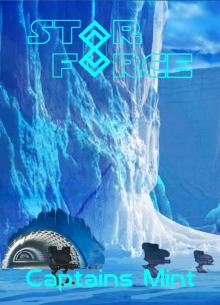 Star Force: Captains Mint (Star Force Universe Book 70)
Star Force: Captains Mint (Star Force Universe Book 70)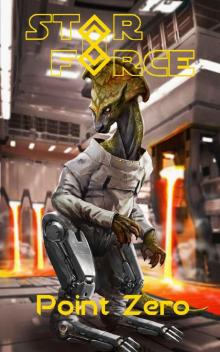 Point Zero
Point Zero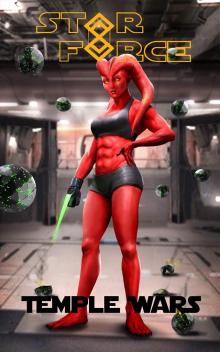 Star Force: Temple Wars
Star Force: Temple Wars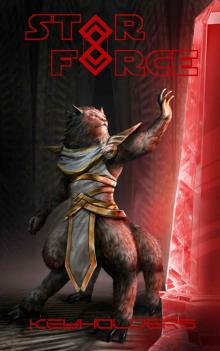 Star Force: Keyholders (Star Force Universe Book 61)
Star Force: Keyholders (Star Force Universe Book 61) Enlightenment
Enlightenment Star Force: Legacy of the Ancients (Star Force Universe Book 59)
Star Force: Legacy of the Ancients (Star Force Universe Book 59) First Contact Fallout
First Contact Fallout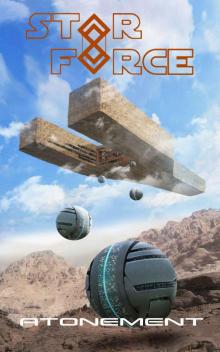 Star Force- Atonement
Star Force- Atonement Carnage
Carnage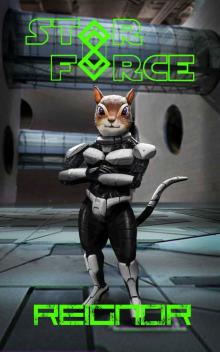 Reignor
Reignor Blood on the Stars
Blood on the Stars Star Force: Death Mark (Star Force Universe Book 67)
Star Force: Death Mark (Star Force Universe Book 67) Star Force: Galactic Empire Revealed (Star Force Universe Book 63)
Star Force: Galactic Empire Revealed (Star Force Universe Book 63) Vargemma
Vargemma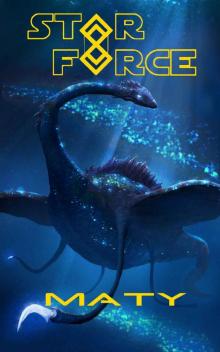 Maty
Maty Star Force: Capitulation (Star Force Universe Book 73)
Star Force: Capitulation (Star Force Universe Book 73)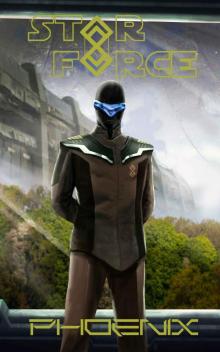 Star Force: Phoenix (Star Force Universe Book 62)
Star Force: Phoenix (Star Force Universe Book 62)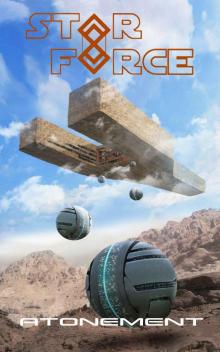 Star Force: Atonement (Star Force Universe Book 68)
Star Force: Atonement (Star Force Universe Book 68) Death Mark
Death Mark Star Force: Penance (SF49)
Star Force: Penance (SF49) Star Force: Headstrong (SF72)
Star Force: Headstrong (SF72)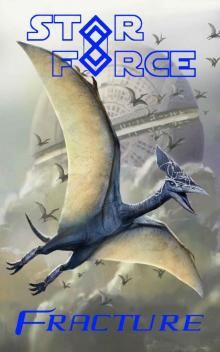 Star Force: Fracture (Star Force Universe Book 47)
Star Force: Fracture (Star Force Universe Book 47) Star Force: Eviction (SF33)
Star Force: Eviction (SF33) Star Force: Secession (SF13)
Star Force: Secession (SF13)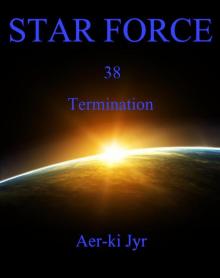 Star Force: Termination (SF38)
Star Force: Termination (SF38) Star Force: Origin Series Box Set (1-4)
Star Force: Origin Series Box Set (1-4) Gateways
Gateways Star Force: Reclamation (SF91) (Star Force Origin Series)
Star Force: Reclamation (SF91) (Star Force Origin Series) Star Force: Excalibur (Star Force Universe Book 41)
Star Force: Excalibur (Star Force Universe Book 41)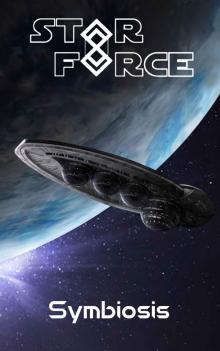 Star Force: Symbiosis (Star Force Universe Book 72)
Star Force: Symbiosis (Star Force Universe Book 72) Star Force: Origin Series Box Set (25-28)
Star Force: Origin Series Box Set (25-28)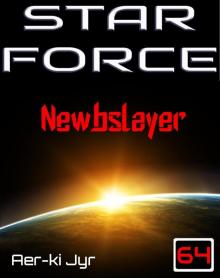 Star Force: Newbslayer (SF64)
Star Force: Newbslayer (SF64)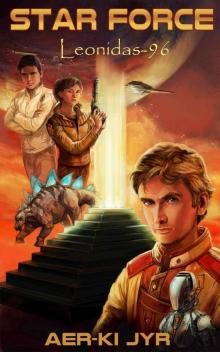 Star Force: Leonidas (SF96) (Star Force Origin Series)
Star Force: Leonidas (SF96) (Star Force Origin Series) Star Force: Origin Series Box Set (9-12)
Star Force: Origin Series Box Set (9-12) Star Force: Ysalamir (Star Force Universe Book 54)
Star Force: Ysalamir (Star Force Universe Book 54) Star Force: Starchaser (SF69)
Star Force: Starchaser (SF69) Star Force: Inception (SF1)
Star Force: Inception (SF1)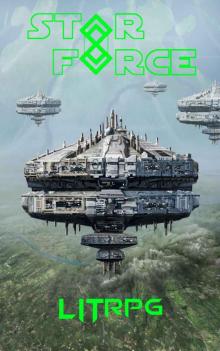 Star Force: LITrpg (Star Force Universe Book 64)
Star Force: LITrpg (Star Force Universe Book 64) Star Force: Psionics (SF29)
Star Force: Psionics (SF29) Star Force: Essence (Star Force Universe Book 51)
Star Force: Essence (Star Force Universe Book 51) Star Force: Clash of the Demigods (Star Force Universe Book 60)
Star Force: Clash of the Demigods (Star Force Universe Book 60) Star Force: Zen'zat (SF14)
Star Force: Zen'zat (SF14) Star Force: Ice Queen
Star Force: Ice Queen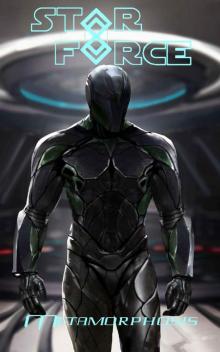 Metamorphosis
Metamorphosis Star Force: Revision (SF78)
Star Force: Revision (SF78) Star Force: Recalibration (SF30)
Star Force: Recalibration (SF30)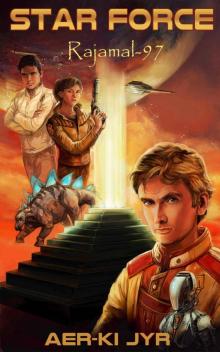 Star Force: Rajamal (SF97) (Star Force Origin Series)
Star Force: Rajamal (SF97) (Star Force Origin Series)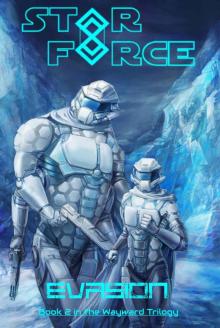 Star Force: Evasion (Wayward Trilogy Book 2)
Star Force: Evasion (Wayward Trilogy Book 2) Star Force: Mastermind (SF32)
Star Force: Mastermind (SF32) Star Force: Excursion (SF46)
Star Force: Excursion (SF46) Star Force: Deception (SF11)
Star Force: Deception (SF11)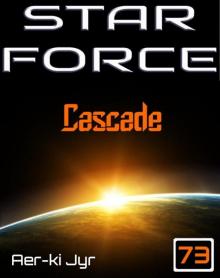 Star Force: Cascade (SF73)
Star Force: Cascade (SF73) Star Force Perseverance (SF81) (Star Force Origin Series)
Star Force Perseverance (SF81) (Star Force Origin Series)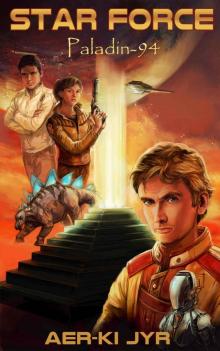 Star Force: Paladin (SF94) (Star Force Origin Series)
Star Force: Paladin (SF94) (Star Force Origin Series) Star Force: Revelation (SF79)
Star Force: Revelation (SF79)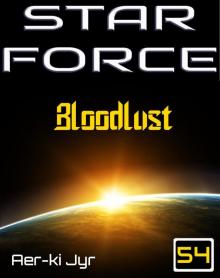 Star Force: Bloodlust (SF54)
Star Force: Bloodlust (SF54) Star Force: Instinct (Star Force Universe Book 49)
Star Force: Instinct (Star Force Universe Book 49) Star Force: Intimidation (SF17)
Star Force: Intimidation (SF17)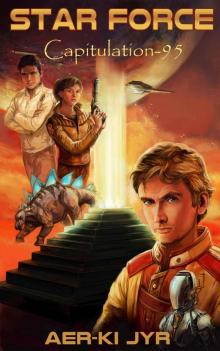 Star Force: Capitulation (SF95) (Star Force Origin Series)
Star Force: Capitulation (SF95) (Star Force Origin Series)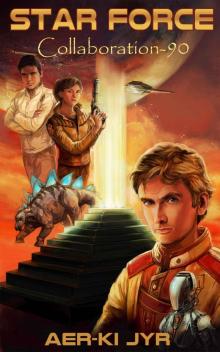 Star Force: Collaboration (SF90) (Star Force Origin Series)
Star Force: Collaboration (SF90) (Star Force Origin Series) Star Force: Mak'to'ran (4)
Star Force: Mak'to'ran (4) Star Force: Unification (SF39)
Star Force: Unification (SF39) Star Force: Origin Series Box Set (37-40)
Star Force: Origin Series Box Set (37-40) Star Force: Fabrication (SF7)
Star Force: Fabrication (SF7) Star Force: Marauders (SF63)
Star Force: Marauders (SF63) Star Force: Ringworld (SF80)
Star Force: Ringworld (SF80)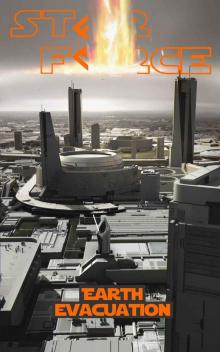 Star Force: Earth Evacuation
Star Force: Earth Evacuation Star Force: Nemesis (SF3)
Star Force: Nemesis (SF3) Star Force: Ambrosia (SF6)
Star Force: Ambrosia (SF6)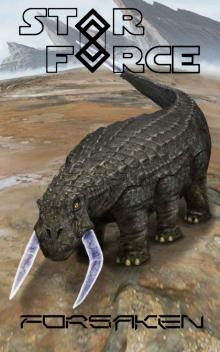 Star Force_Forsaken
Star Force_Forsaken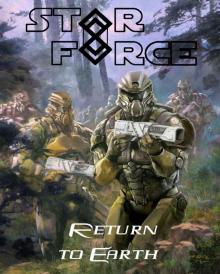 Star Force: Return to Earth
Star Force: Return to Earth Star Force: Knighthood (SF36)
Star Force: Knighthood (SF36) Star Force: Bahamut (SF86) (Star Force Origin Series)
Star Force: Bahamut (SF86) (Star Force Origin Series) Star Force: Integration (SF2)
Star Force: Integration (SF2) Star Force: Benefactor (SF19)
Star Force: Benefactor (SF19) Star Force: Revulsion (SF70)
Star Force: Revulsion (SF70) Star Force: Divide (SF76) (Star Force Origin Series)
Star Force: Divide (SF76) (Star Force Origin Series)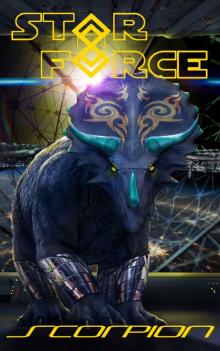 Star Force: Scorpion (Star Force Universe Book 42)
Star Force: Scorpion (Star Force Universe Book 42) Star Force: Extirpation (Star Force Universe Book 56)
Star Force: Extirpation (Star Force Universe Book 56) Star Force: Shiva (SF98) (Star Force Origin Series)
Star Force: Shiva (SF98) (Star Force Origin Series) Star Force: Origin Series Box Set (5-8)
Star Force: Origin Series Box Set (5-8) Star Force: Disarmament (SF10)
Star Force: Disarmament (SF10) Star Force: Escalation (SF12)
Star Force: Escalation (SF12) Star Force: Nexus (SF57)
Star Force: Nexus (SF57) Star Force: Gemini (SF5)
Star Force: Gemini (SF5) Star Force: Augmentation (SF22)
Star Force: Augmentation (SF22) Star Force: Mettle (SF9)
Star Force: Mettle (SF9) Star Force: Rammus (SF83) (Star Force Origin Series)
Star Force: Rammus (SF83) (Star Force Origin Series)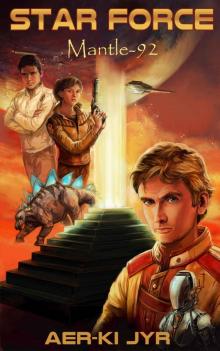 Star Force: Mantle (SF92) (Star Force Origin Series)
Star Force: Mantle (SF92) (Star Force Origin Series) Star Force: Perquisition
Star Force: Perquisition Star Force: Upgrades (SF41)
Star Force: Upgrades (SF41) Star Force: Rift
Star Force: Rift Star Force: Mak'to'ran (5)
Star Force: Mak'to'ran (5) Star Force: Consensus (SF43)
Star Force: Consensus (SF43) Star Force: Ascension (SF27)
Star Force: Ascension (SF27) Star Force: Axius (SF47)
Star Force: Axius (SF47) Star Force: Canderous (SF16)
Star Force: Canderous (SF16) Star Force: Insurrection (SF28)
Star Force: Insurrection (SF28) Star Force: Mak'to'ran (1)
Star Force: Mak'to'ran (1) Star Force: Backstab (SF23)
Star Force: Backstab (SF23) Star Force: Hamoriti (SF62)
Star Force: Hamoriti (SF62) Star Force: Flashpoint (SF8)
Star Force: Flashpoint (SF8) Star Force: Aquatics (SF31)
Star Force: Aquatics (SF31) Star Force: Divergent (SF74)
Star Force: Divergent (SF74) Star Force: Origin (SF24)
Star Force: Origin (SF24) Star Force 75: Resistance
Star Force 75: Resistance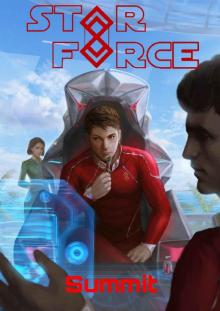 Star Force: Summit (Star Force Universe Book 44)
Star Force: Summit (Star Force Universe Book 44)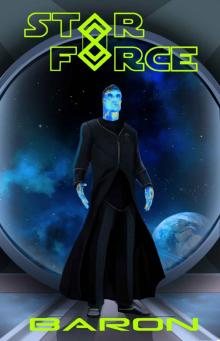 Star Force: Baron (Star Force Universe Book 43)
Star Force: Baron (Star Force Universe Book 43) Star Force: Mak'to'ran (2)
Star Force: Mak'to'ran (2) Star Force: Trials (SF68)
Star Force: Trials (SF68) Star Force: Origin Series Box Set (13-16)
Star Force: Origin Series Box Set (13-16)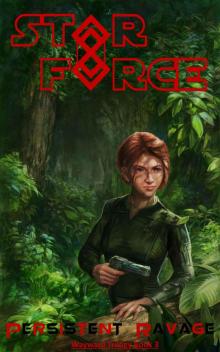 Star Force: Persistent Ravage (Wayward Trilogy Book 3)
Star Force: Persistent Ravage (Wayward Trilogy Book 3) Star Force: Kaalo (SF99) (Star Force Origin Series)
Star Force: Kaalo (SF99) (Star Force Origin Series) Star Force: Counterstrike (SF18)
Star Force: Counterstrike (SF18) Star Force: Foothold (SF25)
Star Force: Foothold (SF25) Star Force: Sav (SF51)
Star Force: Sav (SF51) Star Force: Veracious (SF48)
Star Force: Veracious (SF48) Star Force: Allegiance (SF21)
Star Force: Allegiance (SF21) Star Force: Resistance (SF75)
Star Force: Resistance (SF75) Star Force: Deceit (SF34)
Star Force: Deceit (SF34) Star Force: Lost Destiny (Wayward Trilogy Book 1)
Star Force: Lost Destiny (Wayward Trilogy Book 1) Star Force: Melee (SF20)
Star Force: Melee (SF20)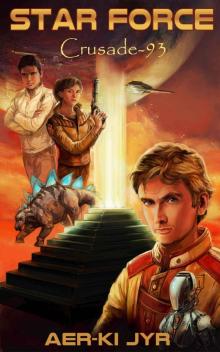 Star Force: Crusade (SF93) (Star Force Origin Series)
Star Force: Crusade (SF93) (Star Force Origin Series) Star Force: Scruples (SF37)
Star Force: Scruples (SF37) Star Force: Trailblazer (SF4)
Star Force: Trailblazer (SF4) Star Force: Commando (SF40)
Star Force: Commando (SF40) Star Force: Retribution (SF60)
Star Force: Retribution (SF60) Star Force: Relocation (SF44)
Star Force: Relocation (SF44) Star Force: Dominance (Star Force Universe Book 50)
Star Force: Dominance (Star Force Universe Book 50) Star Force: Death Knell (SF26)
Star Force: Death Knell (SF26) Apex
Apex Star Force: Paradigm (SF35)
Star Force: Paradigm (SF35) Star Force: Origin Series (17-20)
Star Force: Origin Series (17-20) Star Force: Mak'to'ran (3)
Star Force: Mak'to'ran (3) Star Force: Colonization (SF15)
Star Force: Colonization (SF15)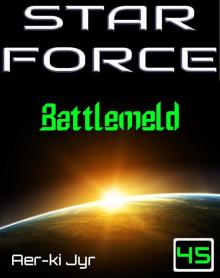 Star Force: Battlemeld (SF45)
Star Force: Battlemeld (SF45)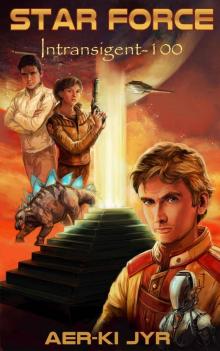 Star Force: Intransigent (SF100) (Star Force Origin Series)
Star Force: Intransigent (SF100) (Star Force Origin Series) Star Force: Shame (SF59)
Star Force: Shame (SF59) Star Force: Origin Series Box Set (33-36)
Star Force: Origin Series Box Set (33-36) Star Force: Zealot (SF87) (Star Force Origin Series)
Star Force: Zealot (SF87) (Star Force Origin Series) Star Force: The Admiral
Star Force: The Admiral Star Force: Empire (SF58)
Star Force: Empire (SF58) Star Force: Origin Series Box Set (29-32)
Star Force: Origin Series Box Set (29-32) Star Force 82 Hradeiti (SF82) (Star Force Origin Series)
Star Force 82 Hradeiti (SF82) (Star Force Origin Series)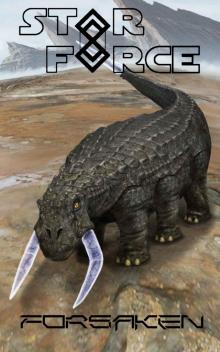 Star Force: Forsaken (Star Force Universe Book 48)
Star Force: Forsaken (Star Force Universe Book 48) Star Force: Origin Series Box Set (21-24)
Star Force: Origin Series Box Set (21-24) Star Force: Resurrection (SF84) (Star Force Origin Series)
Star Force: Resurrection (SF84) (Star Force Origin Series)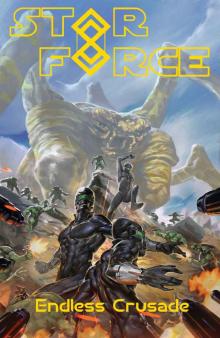 Star Force: Endless Crusade
Star Force: Endless Crusade Star Force: The Dinosaur War (Star Force Universe Book 45)
Star Force: The Dinosaur War (Star Force Universe Book 45)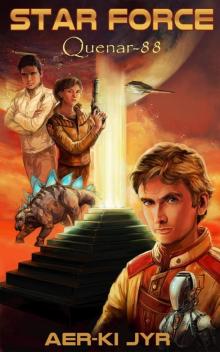 Star Force: Quenar (SF88) (Star Force Origin Series)
Star Force: Quenar (SF88) (Star Force Origin Series) Star Force: Intellect (SF85) (Star Force Origin Series)
Star Force: Intellect (SF85) (Star Force Origin Series) Star Force: Resolution (SF89) (Star Force Origin Series)
Star Force: Resolution (SF89) (Star Force Origin Series) Star Force: Probe (SF42)
Star Force: Probe (SF42) Star Force: Rescue (SF71)
Star Force: Rescue (SF71) Star Force: Evacuation (SF50)
Star Force: Evacuation (SF50)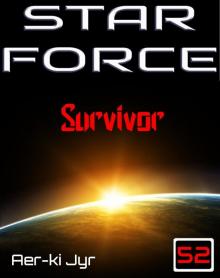 Star Force: Survivor (SF52)
Star Force: Survivor (SF52)